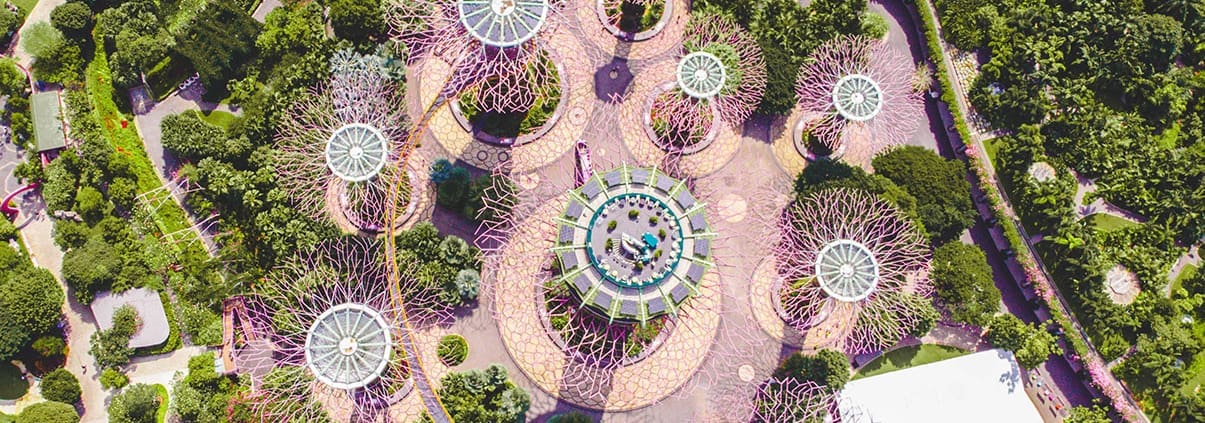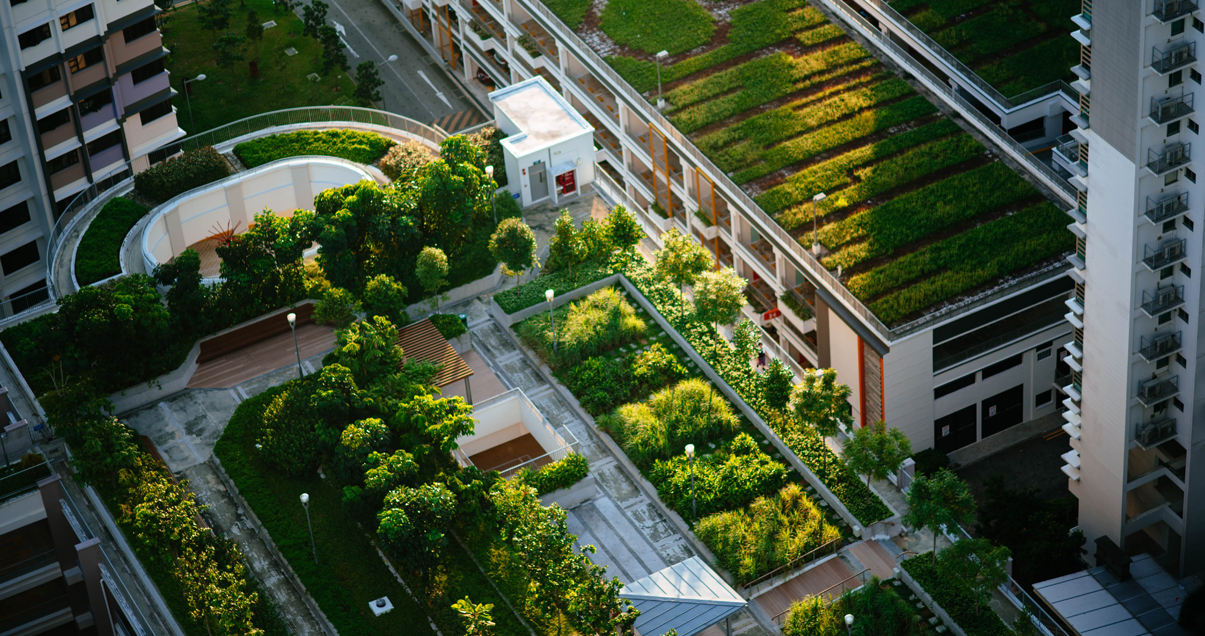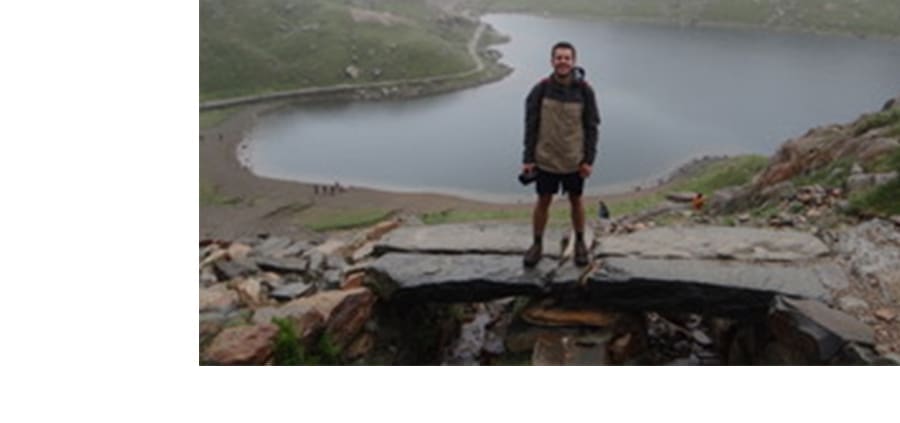Text: Birgit Scheuch, 24.03.2021
The words “sustainable city” instantly conjure up visions of climate-neutrality, resource-efficiency and green living. But whether we’re talking Rio de Janeiro or Ulaanbaatar, what exactly does a sustainable city look like in practice?
There’s no such thing as a single blueprint for the sustainable city, too vast are the differences between small towns and huge metropolises, between the alpine uplands and the Sahara, between high-tech nations and agrarian states. The United Nations’ Agenda 2030 provides some reference points. “Sustainable Cities and Communities” is the 11th of 17 sustainable development goals to which the international community committed itself in 2015.
The introductory definition alone gives a clue to the complexity of the issue, because nowhere is the preservation of our natural lifestyles more intrinsically intertwined with a whole range of other aspects than in the urban environment.
Production and consumption, habitation and mobility and even aspects like basic services and education all have an impact on our climate. On top of that, urban development also involves taking account of myriad different interests. So it’s no wonder that the numerous supranational, national and local guidelines and invitations to tender aimed at achieving the sustainability targets encompass a broad range of recommendations. That said, the interim review from December 2020 offers ideas and recommendations for further improvements.
Impressive pilot projects of all sizes and scales all over the world, however, demonstrate the increasing level of dynamism on this front. Rarely acknowledged by politicians in their day-to-day business, people all over the world – urban developers, urban sociologists, neighborhood initiatives and publicists – are tirelessly championing the benefits of sustainable cities both locally and online.
In this series, we talk to some of the protagonists in this story – urban dwellers, urban developers, sustainability experts – about what the “sustainable city” means to them and to us all.
Susanne Peick
“It’s time we showed some humility toward natural processes.”
Susanne Peick is the editor-in-chief of polis. Since its founding in 1990, the “Magazine for Urban Development” has been reporting on developments and trends in the real estate industry and serving as a networking hub for people in the urban development industry
What does the city mean to you personally?
For me, the city is like an organism that is influenced and shaped by a whole range of players and stakeholders. Thanks only to the interaction among these people – sometimes good, sometimes not so good – can the city live and breathe at all. And even if it sounds contradictory, the only constant in urban life is change. There’s no such thing as “The City.” It is different than it was yesterday and evolves with every passing second.
What characterizes an (ecologically) sustainable city?
An (ecologically) sustainable city is as energy- and resource-efficient as possible. This can be seen in not only ecofriendly technology but also the ecofriendly behavior of its inhabitants. This, in turn, is based on individual responsibility but also has to be nurtured – or even enabled in the first place – through urban structures. If I live in a city with excellent public transport, for example, I’m more willing to take the bus instead of my car. And if the neighborhood I live in has been designed to cover my everyday needs, maybe I’ll switch completely to walking or public transport. The compact city is and remains our ultimate goal, and this can be supplemented with state-of-the-art, energy-saving technology and by ensuring that we utilize energy intelligently. This encompasses everything from the construction of buildings and their operation and management through to the recycling of materials when buildings are demolished.
What’s your contribution here?
As an urban citizen, I see it as my responsibility to act in this spirit wherever possible. I don’t take the car unless I really need to. In my private life, I try to reduce the amount of energy and water I use and also make the most of what my immediate surroundings have to offer when it comes to covering my everyday needs, which also includes trying to buy more local and regional products. I believe that every step counts – and that you should also try to avoid being too dogmatic. Bans and reprimands serve only to create resistance. Even if it can sometimes seem hard, appealing to people’s better nature can often still pay off.
Why is this important, and how did you get involved in this movement?
If we want to not only improve our cities but also make them more attractive for future generations, an environmentally focused mindset is essential. In these times especially, our lack of dominion over nature has never been plainer. On the contrary, we first have to return to the realization that we are just one part of an (ungovernable) whole, of a natural process that we can influence both positively and negatively. I believe that it’s never been more important than now to show humility toward natural processes and reintegrate ourselves in the natural cycle of life rather than try to force nature to work around our lives. This isn’t a mindset that you “learn.” I believe that it forms within you when you go through life with your eyes open and take time to critically reflect upon not only yourself but also the world around you. Of course, maybe my position as editor-in-chief of polis has given me a heightened awareness of specific points.
Let’s look into the future. What will our life in a sustainable city look like?
That’s a tricky question. Allow me to sketch out an idealized scenario: I would ideally love to see attractive, mixed-use neighborhoods with lots of green space and places that promote encounters. Cars are useful, but no longer essential. Everything you need for your everyday life is just a short walk away. Ideally, I can get to work with the help of optimized infrastructure and excellent bus and/or train links. Whatever we produce as “waste” is ideally recycled or sent to the local energy supplier, which then feeds it back into the urban energy distribution network. And on top of that, in times of energy shortages, we try to generate as much energy as possible from the sun, wind and sea.
Thanks for the interesting interview.
Cornelia Zuschke
“We need to think about how we manage urban land.”
Cornelia Zuschke is head of the Planning, Building, Mobility and Real Estate department of the State Capital Düsseldorf.
What does the city mean to you personally?
For me personally, the city is both my place of residence and my home, a place of discovery and cultural life. The city as a public sphere offers space for a whole variety of lifestyles and behaviors. The city is a concentration of urban landscapes, functions and structures, and its infrastructure opens up whole new visions and opportunities. Through the agglomeration of values and traditions, it is a unifying thread for processes and projects. And every city ultimately has its own beauty as an individual, special place that needs to be developed and shaped.
What role do you play in the “urban system”?
Like everyone, I play multiple roles in the “urban system.” First, I live there. Second, as a councillor in the Planning, Building, Mobility and Real Estate department, I am in the privileged position of being able to shape the city and its infrastructure. And third, I learn from other urban developers and pass on my own knowledge as a teacher.
What characterizes an (ecologically) sustainable city?
A city that doesn’t consume itself, that is not always seeking to make money from its substance but also generate value through intelligent planning and synergies.
An ecologically sustainable city is one that transforms itself instead of simply continuing to use more and more resources. This can be achieved, for example, through neighborhood redevelopments that give something back to the environment, the city as a whole and the people through (public-)sector projects with clear climate, biodiversity and noise reduction goals.
It means thinking ahead, about innovations that promote every form of climate-neutrality and increase sustainability. This covers a whole range of areas including the mobility structure, the amount of green and open spaces, climate protection, the social mix, the supply structure, schools, kindergartens and so on.
We have to liberate our ground resources again, which involves cleaning up the land and not sealing it under concrete and asphalt; in other words, we need to increase the density – not the spread – of development.
We need strong neighborhoods that promote social opportunities and peace. We need regional concepts to solve the same questions – networking projects focusing on climate, mobility, flora, fauna, water and settlement development.
Let’s look into the future. What will our life in a sustainable city look like?
Life in the sustainable city is all about using as little energy as possible and creating self-sustaining neighborhoods. Everyone can be themselves. The urban space not only is conducive to human transit, but also invites people of all ages and at any time of the year to linger and explore. The emphasis is on localized mobility, on sharing not owning, with options like mobile stations and neighborhood garages to facilitate this. These new mobility concepts help to reduce traffic noise, while good public transport links and a dense of network of cycle paths and footpaths are a given.
We live and work in close proximity to each other and in a flexible manner that suits our lifestyles. We have the opportunity to enjoy more open space close to our homes – space that’s non-commercialized, extensive, free to access, multifunctional, safe. Indeed, this is already a subject of discussion. I envisage urban gardens on rooftops, in garden plots or spaces integrated in neighborhoods and throughout the city. I see spaces for play, not “playgrounds.”
What are the biggest challenges that we need to overcome if we want to achieve this vision?
We need to think about how we manage urban land. City representatives need to address land management at all levels. Planning permission requires a sense of proportionality and perspective. There needs to be less focus on speculation and more on projects that add value for the urban environment.
A “cradle to cradle” approach to construction focusing on the after-use potential of buildings and their constituent parts needs to be adopted. Projects need to be energy- and resource-neutral.
We need more affordable housing, which requires city representatives to impose the necessary requirements on projects. On top of this, we need a thorough and systematic functional and social mix. We need more flexible ground plans, more shared space, more balconies and terraces, multifunctional outdoor areas close to where we live and a decentralized supply infrastructure to strengthen district centers. This all requires changes in how housing subsidies and the infrastructure are managed.
Infrastructure needs to be designed in a multidimensional way with an eye on tomorrow so that our cities remain viable long into the future. The existing infrastructure needs to be maintained and modernized.
Every project must deliver social and public benefits, use minimal land, create open spaces, help to improve the climate and so actively reduce the burden on our cities. Let’s move away from the concept of recycling alone and start thinking about how we can create value right from the outset and in the broadest sense.
Thanks for the informative interview.
Mike Hosey
“Let’s reincorporate nature.“
“For something so important, sustainability gets only very little attention. It’s time that changed,” writes Mike Hosey in his Think Sustainability. blog, which he started back in 2017. His mission is to highlight the importance of sustainability and promote it in all areas of life – for the sake of future generations.
What does the city mean to you personally?
To me, a city is the economic hub of a country or region. It’s predominantly where people go to work, where money is created, but it can also be so much more. It is somewhere to spend the money we make, to socialize with family and friends and to get involved in much larger events like community gatherings and sports events.
What characterizes an (ecologically) sustainable city?
Right now, the vast majority of cities around the world are unsustainable with very little consideration of how the natural environment plays a vital role in our urban areas or impacts society and the health of those living in cities. A sustainable city considers the triple-bottom line of sustainability. The economy, society and the natural environment have an equal standing and no single aspect is prioritized over another. In other words, cities remain economically strong, but not at the expense of the natural environment or those living in the city. We must consider nature’s role in the urban environment and the role that it has on us. A sustainable city embraces all three of these aspects equally and does so in a way that allows the city to thrive and will continue to do so in the future.
How do you contribute? What is your role in this?
As with many aspects of my life, I do make conscious changes to live more environmentally and play my own role in helping develop a sustainable city. I will take public transport more often or walk when I can; I’ll limit the amount of waste I produce as much as possible by using reusable items; and I also look to get involved in the community when I can. Although I don’t live in a big city, I also keep making changes to my energy and water consumption, waste generation, forms of travel and much more, to live a more sustainable life at home too.
Why is this important and how did you come to this?
The state that this planet is in with regard to climate change is disastrous and, without action, it’s only going to get worse. There are changes that vitally need to be made at a national and regional scale that many of us don’t feel like we have any role in accomplishing, but there is still so much we can do ourselves in our local communities. Having studied Geography and Sustainable Development at university, I’ve studied just how important tackling climate change is and I personally want to do what I can.
What are the biggest challenges we have to solve?
One of the biggest challenges is reincorporating nature and the natural environment into built-up cities. Just by doing this, we can solve some of the major issues that cities are currently facing. As cities developed and became so important to the economic output of nations, we forgot the role of nature and prioritized economic growth, not truly understanding the impact that this would have. Looking closer to home at cities in the UK, air pollution, congestion and access to green space are just three examples where the importance of the natural environment has been forgotten.
There are an increasing number of studies that show the benefits of the natural environment for both our health and for the liveability of cities around the globe. Whether that’s planting more trees to cool our warming cities and create natural shade or helping to naturally clean urban air, which is being shown to contribute to thousands of deaths each year, or even making nature more accessible for those living in cities, regardless of income level, strong links to the natural environment in our urban areas will create much more sustainable cities.
Let’s look into the future: what will our life in a sustainable city look like? What is your wish or vision of it?
A sustainable city will be a city that is built for the people that live in it and one that considers both the natural environment and the economic importance of it. My vision is that it would be much greener, much cleaner and much more people-friendly. Trees will line streets in order to create shade during the hotter summer months and reduce the impacts of flooding by intercepting precipitation. Vertical and rooftop gardens will be common on buildings throughout the city to help reduce the impacts of a warming planet and the need for carbon-emitting air-conditioners. There will be fewer cars on the road, with public transport much more accessible for those living within and outside of the city. Roads will be pedestrianized and the air will be a lot cleaner. The majority of buildings, if not all, will be powered on renewable electricity. It may seem like a very utopian view to have for a city, but there are cities around the world starting to make changes that will bring visions like this to life. I truly believe it’s just a matter of time until we get there.
Thanks for the interesting talk.
read more
There is no agreed definition of the term “sustainable city,” but there are a few overlaps with the concept of the “smart city.” Without digitalization, sustainability projects will be almost impossible to manage. In turn, a smart application can be deemed viable for the future only if it takes into account not only economic but also social and ecological aspects.






